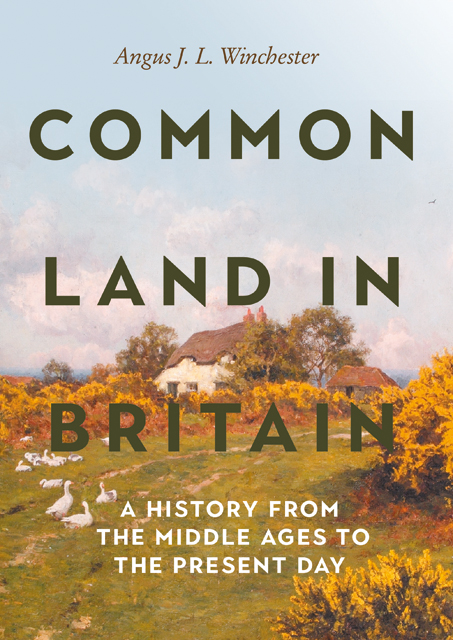Chapter 1 - Commons in the British Landscape
Published online by Cambridge University Press: 20 December 2022
Summary
According to modern legal definitions, common land covers more than 2.7 million acres (1.1 million ha) of Britain. In England, 986,000 acres (399,040 ha) or 3 per cent of the land area is registered common land (a figure which includes 62,900 acres (25,470 ha) of commons in the New Forest, the Forest of Dean and Epping Forest, which were excluded from the Commons Registration Act 1965). The bulk of common land in England lies in the uplands, as it does in Wales, where registered commons amount to 428,387 acres (173,366 ha) or 8.4 per cent of the land area. In Scotland 1.46 million acres (591,900 ha) of common grazings in the north-west Highlands, Western Isles and Shetland are registered under the Crofting Acts, amounting to 7.4 per cent of the country.
At the macro-scale, the distribution of common land can thus be said to be environmentally determined. The largest stretches of common land are found in the uplands, from the Highlands and Islands of Scotland, through the Pennines, the North York Moors and Lake District fells, to Snowdonia, the Brecon Beacons and the moorlands of Dartmoor and Bodmin Moor (Figure 3). Over half of the area of common land in England lies in the two northern counties of Cumbria (31 per cent of the total) and North Yorkshire (21 per cent) and, when Devon (12 per cent) and Co. Durham (8 per cent) are added, over 70 per cent of all England’s common land is found in just those four counties. In lowland England, commons are numerous. Some wetlands and heaths cover large areas but many lowland commons are very small – half of all registered commons in England contain less than one hectare. Lowland common land is most frequent in the southern counties and East Anglia and across the Welsh Marches; few commons survive in the ‘Central Province’, the heartland of former open-field farming.
Assessing the extent of common land in a historical context poses several difficulties, not least because it was a shifting acreage which shrank over time as a result of enclosure. The chronological starting point for this book is the early medieval period, during which the framework of the rural landscape (its villages and territories, manorial and administrative boundaries) was laid down.
- Type
- Chapter
- Information
- Common Land in BritainA History from the Middle Ages to the Present Day, pp. 9 - 20Publisher: Boydell & BrewerPrint publication year: 2022



